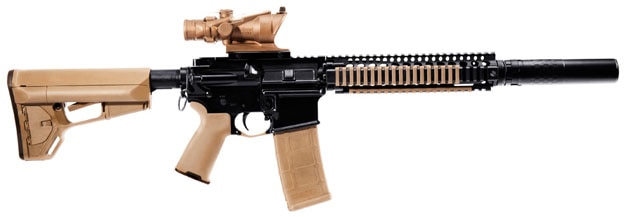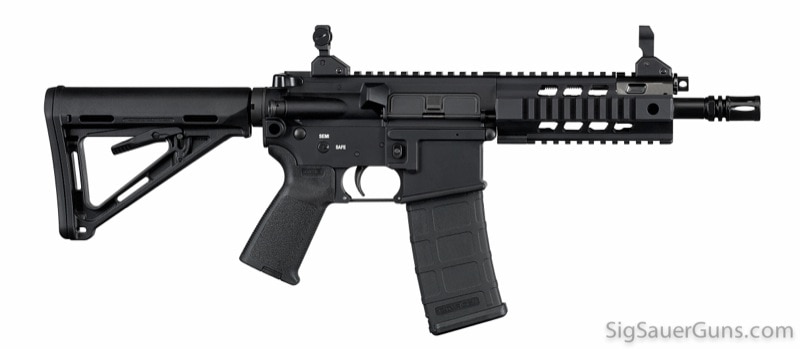If we are going to have any understanding of any potential legislative changes that may be coming, we need know how things stand now, and why firearms receive so much legislative attention. So let’s go back a ways. All the way back to the 1930s.
Back then, mobsters and bootleggers received a fair amount of media scrutiny. Running liquor was a (sometimes) profitable business, and some of the parties involved armed themselves with revolvers, pistols, modified shotguns and early machine guns (like the Thompson Model 1927 A1).
There may have been some rifles thrown in, too, but you can see where this is going. When legislators decided to regulate firearms, they targeted the favorites of organized crime. In 1934, Congress passed the National Firearms Act (NFA). The law, modified slightly in 1968, had some far reaching effects.
The Ban
Even though the NFA has been in place for almost 80 years, many people still don’t understand it. To be slightly reductive, the NFA restricts sales, ownership, use, and transport of short barreled rifles, short barreled shotguns, machine guns, silencers and suppressors, and “destructive devices.” The emphasis seemed to focus on firepower (machine guns), concealable weapons (short this, short that, silenced etc.), and things that are generally deemed destructive.
Just to make things really cloudy, it provides one more category of banned items that is commonly labeled “any other weapon.”
The common definitions.
- Machine guns—should be obvious to most Guns.com readers. Full auto or burst fire. Because the magic of automatic fire happens in the receiver of a firearm, the receiver has been designated the “firearm” itself.
- Short-barreled rifles (SBRs)—a rifle with a buttstock and either a rifled barrel under 16″ long or an overall length under 26″. If a rifle has a collapsible stock, the length is measured with the stock extended.
- Short barreled shotguns (SBSs)—if a shotgun’s barrel is under 18″, it is designated as an SBS. Likewise, if the total length is under 26″ (even if the barrel is longer than 18″) it is still considered an SBS. But it has to have a buttstock to be considered a shotgun in this category. Otherwise it is a smooth bore pistol.
- Silencers —anything that is portable and attaches to a firearm to disguise the sound.
- Destructive Devices (DDs)—this is a broad category that covers explosives, missiles, and poison gases. It also covers anything really big, like firearms with bores over .50 (except shotguns, which are seen to have legitimate sporting uses).
- Any Other Weapons (AOWs)—this one can be confusing. The term comes from language used to cover anything the legislators hadn’t considered, or that might be developed in response to to NFA regulation. The most common guns to be classified as AOWs are smooth bore pistols (which are made without stocks, so they aren’t technically “shotguns”), guns that are disguised as other things (or hidden inside other objects), or handguns with forward grips.
Why is the NFA important?
With the passage of the NFA, these guns immediately faced severe restrictions. While owning them is still technically legal, they must be registered (which isn’t exactly easy) and they are taxed more heavily ($200 for owning a silencer, for example, or as low as $5 for some smooth bore pistols, like the Serbu Super Shorty pictured earlier). Anyone wanting to own one or manufacture one has to go through the BATFE for approval.
It is a fascinating snapshot of our American reactionary impulses, for one. Has any would-be bank robber remembered the NFA and resisted the temptation to take a hacksaw to his scatter-gun in the hopes that it might fit more easily inside his trench coat? Doubt it.
If you want a firearm (or suppressor or destructive device) that is covered by the NFA, you can get it. The paperwork is a hassle, to be sure (and impossible to get cleared in certain places). But the paperwork is much easier to handle than the consequences of being caught with an unregistered NFA firearm.
But firearms enthusiasts should look at it from a cautionary perspective, as well. This was possible. In fact, it is one of several legislative acts that govern the way we think about firearms. And the NFA will be the cornerstone on which new restrictions will be built.
So pay heed to the winds of change. And if you’re at all concerned, contact your political representatives and support organizations that are fighting for common sense legislation.
The post Gun Law 101: National Firearms Act of 1934 appeared first on Guns.com.



